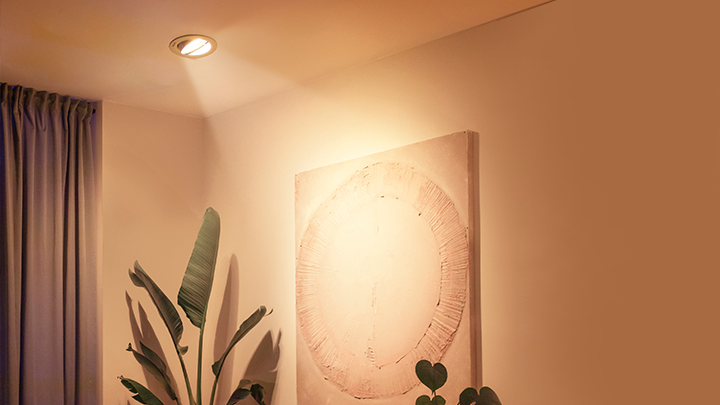There are several misconceptions behind the usage of spotlights. For one, people believe that they are required only for stage performances and in a library s reading section. They couldn t be more wrong. Spotlight lighting has the ability to morph themselves to the needs of a person. Besides working as task lights, they can be used as a source of ambient lighting, coupled with several spotlights. For accent lighting, a single spotlight focused on any designer piece can be used.

Spotlight lighting can be used in almost every setting of the home, right from the kitchen to the reading room. They can also be used to produce exceptionally bright lights with the use of parabolic aluminized reflector bulbs. These bulbs contain several prismatic lenses and reflectors which help in producing concentrated beams of high intensity.
Spotlight lighting comes in a wide array of designs and colours. There is always one that will fit the ambience of your home. Despite this variety, the basic design still remains the same. The bulb is contained inside a casing above the ceiling. This casing or housing is then sealed away to ensure that the bulb does not start acting like a chimney. This refers to a situation where the bulb, after heating up, starts sucking up the hot air towards itself. Modern casings are closed with the use of simple clips.
Types of Spotlight Lighting based on Power Ratings
1. Low Voltage Downlights: These make use of transformers that can cut down the standard 240V supply to 12V. This, however, does not mean that the power consumption is reduced. It often happens that the transformer will waste a lot of energy to give the end result. Most of these transformers come with an internal thermal cut-off, which triggers when:a. They are made to drive more number of fittings than they are designed for.
b. They do not have sufficient free air to cool down.
Still, these downlights have a longer-than-average life.
2. 240V Downlights: These are the preferred choice for those who want bright illumination. They are cost effective, as they do not require a transformer for their working.
3. 240V GU-10 Downlights: The light produced by them is yellow toned. They are a good alternative to low voltage downlights and do not need transformers.
Traditionally, ceiling downlights have always been used as task lights. This gives them the advantage of being used with a host of other lighting varieties. Some designers even use them as the primary source of general lighting. However, for doing so, they have to keep in mind the space between each successive lighting piece. Depending on style, the ceiling downlights are divided into fixed and adjustable varieties. Some of them have the option of a dimmer, which allows for precise light control. The various bulb options are:• CFL
• Halogen
• LED
• Energy Efficient Halogen
The number of ceiling downlights required to illuminate any room depends directly upon the dimensions of the room. Other parameters to be considered are the colours present in a room, the intensity of light required and the areas where they will be installed. Proper installation is also very important. For instance, halogen downlights entail a high risk of fire if all the installation requirements are not met. All such installations must be made away from any other ceiling installation in the room. Various fire shields can be coupled with the downlight installation to provide extra protection.
Lighting Your Home Office
Think about how much time you spend in your home office. With telecommuting becoming more common, as well as home use of a computer, the lighting is an important aspect of creating a positive work environment. Proper lighting is important for more than simply being able to see – good lighting has also been shown to increase productivity, decrease errors, and also lowers fatigue and eye strain. If you spend more than half your working day in front of the computer, there are different lighting needs than you will have in other parts of your home.
Looking at your computer screen in the dark is not good for your eyes. This is because of the contrast ratio. Your eyes can’t determine whether to focus on the bright computer screen or the dark background. This causes undue strain on your eyes over time, contributing to fatigue.
The same principal works with a bright light behind you. Your eyes will try to compensate if your computer is in front of a window, with sunlight glaring in. It makes it difficult to see what is on the screen, causing eye strain as well.
Desk lamps are a versatile and inexpensive lighting solution. Having an attractive desk lamp will make your work environment more pleasant and visually appealing. Many desk lamps include an adjustable neck. Being able to bend your lamp makes it easier to accommodate to the task at hand. If you have a need to work on something more detailed, you can simply shift the lamp’s focus to the project temporarily. Desk lamps are also easy to readjust to different heights. Make sure that you are maximizing your work space by experimenting with different placements of the light and the angle it comes in. Once you have proper lighting, you will experience a greatly improved work area.
Another thing you can do to make sure that your area is well lit is to make sure your walls are painted a light color. This will help the efficiency of your lighting as well as reducing glare.
Lamps are also available in a huge host of styles. You aren’t limited by the discount chains choices of plain lamps. Your work area can be lit with beautiful tiffany shades or specialized interest lamps, such as lighthouses. The imagination is the only limit for lighting your space. Make your lamp a decorative conversation piece while providing function.
Shop for a wide variety of lamp choices to enhance your work environment. Whether your office is at the office, or in your home, make sure that you have plenty of light available for the most rewarding experience.
Keep it Glowing with Aquarium Lighting
If you have your own aquarium at home, you need to take care of your fishes just like they were family because a bit of carelessness may cause them some trouble. You need to check if there is good aquarium lighting. This is important for aquarium plants and the fishes.
If your aquarium has poor aquarium lighting, your colorful fish may not be seen properly and it will also cause it to fade and turn the shades to other colors. If you want to have good aquarium lighting, you can choose between fluorescent or incandescent light.
If this is your first time to put up an aquarium, trying out the light may be from trial and error because you need to check if the light matches with the environment of your aquarium. Try to see first whether it is too dark or too light, then you can start adjusting the lights.
If you have too much aquarium lighting, it might cause the water to look green. If you have little light, it might cause to inhibit plant growth. You may choose whether you want artificial light or natural light. You can even make a combination to see which does better in giving light to your aquarium.
If you want the best aquarium lighting, you can place the light facing a window in the north. It is a good way to provide light in this manner because indirect lights are being spread. You can add artificial light to it if you want to. If it is daylight, it will be fine to shut the artificial lights off but when the natural light goes out, you need to let light stand in the aquarium for at least 8 hours.
You can also use light colored bulbs for your aquarium lighting. This will give impact to the nice colors of your fishes and the colors may even be enhanced. If you want your aquarium lighting to give a good effect to your aquarium, use light from behind. This will show the best features of your aquarium and the plant growth will stay healthy too.
Start gathering the best light that you wish to put in your aquarium. After setting up a good lighting, you might never take your eyes of your aquarium. A lot of people will surely notice and appreciate your aquarium because of the aquarium lighting that you have installed.
Discover more from Personal Blog of Richard Tong
Subscribe to get the latest posts sent to your email.




